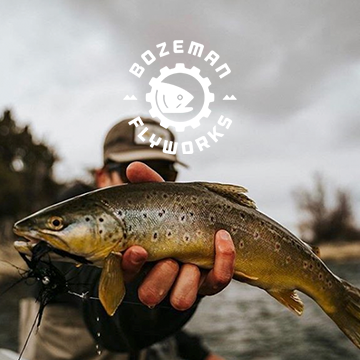The Life of a Caddisfly
Caddisfly Life Cycle
Caddisflies, formally known as Trichoptera, are commonly found on rivers, lakes, and streams throughout the U.S. West and around the world. The definition of the ancient Greek word means “Hairy Wings,” and rightfully so.
With all of the bugs that thrive in the rivers of Montana, the caddis seem to be the most prominent and active within the system. The life cycle of the caddis is simple, and plays a large role in the health and diet of trout. Unlike the mayfly, the caddis undergoes a complete cycle, and the hatch can change every evening depending on the species.
The caddis is one of the more active bugs that we regularly encounter on the river. Mostly seen flying around during the evenings throughout the summer and fall, most of their life actually occurs beneath the surface.
The caddisfly life cycle can be broken down into 3 main phases: the larva phase, pupa phase, and the adult phase. Throughout their entire life they undergo metamorphosis, and change shape and size within all of them. With all that being said, lets break down the caddisfly life cycle into its three phases.
Larva:
The larva is the first phase of the caddisfly life cycle. It begins when the female fly lays eggs, which either reach the bottom or float down river. From there, the eggs that reach the bottom of the river hatch into long, large nymphs called larva.
After that, the nymphs either build cases on rocks or swim downstream. The cases allow them to prepare for the transformation into the pupa phase. The larva in its casing can swim around on rocks, and is a large part of the trout’s diet below the surface.
Recommended Flies:
- Shark’s Caddis Larva
- TB Electric Caddis
- Pulsating Caddis Olive
Pupa:
The pupa phase of the caddis’ life cycle is one of the most important for fisherman, and should not be overlooked. During this period the caddis emerges from its case on the bed of the river and emerges to the surface to become an adult.
The reason that this stage is overlooked is because it is extremely difficult to see. When we think of a caddis hatch, we primarily think of large adult caddisflies floating through seams and pools, but that is only half of the actual hatch. Many anglers forget that only a certain percentage of the bugs actually make it to the surface, and that fish are mainly feeding on the larva and pupa emerging to the surface.
Trout feed mainly on larva and pupa caddis, and adult flies only when the conditions align. Caddis nymphs and emerging patterns can be very productive because the trout are always looking for those bugs to be floating around in the water columns.
Recommended Flies:
- LaFontaine’s Deep Sparkle Pupa
- Nitro Caddis Pupa
- Holy Grail Pupa Nymph
- Bread and Butter Caddis Emerger
Adult:
This is the most exciting phase to fish due to the consistent action. When the fish are eating adult caddis on the surface, it can be some of the most exciting dry fly fishing of the summer. And the best part is, these caddis hatches stick around for almost the whole summer.
The caddis hatches in Montana and other Western states are generally strong throughout June, July, August, and both fisherman and the trout enjoy it equally.
When the pupa turns into and adult, it displays tent-like wings and long antennas. This allows the adult fly to move through the last section of the water column and fly away from the surface, to either be eaten, live in the bushes, or lay eggs for more caddis to endure the cycle.
Most flies that become adults and fly away from the water only have the capacity to breed. The caddisfly does not last long after it becomes an adult and breeds.
Recommended Flies:
- Elk Hair Caddis
- CDC & Elk Caddis
- October Caddis
- Galloup’s Double Wing Caddis
The caddisfly undergoes three main phases of its life, but inside those phases other transformations occur. This past summer we experienced some of the strongest caddis hatches in awhile, and we cannot wait to see what next summer brings.
Words by Ben Nelson of The Angler’s Hatch.
www.theanglershatch.com



